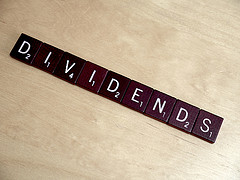 The low interest rate environment may be beneficial for borrowers, but it’s certainly not helpful for savers. With fixed income like bonds and GICs earnings less than the rate of inflation, investors are faced with a difficult decision: should I play it safe and invest in bonds and GICS barely earning anything and delay my retirement, or should I put my money in riskier investments with the hope of coming out ahead?
The low interest rate environment may be beneficial for borrowers, but it’s certainly not helpful for savers. With fixed income like bonds and GICs earnings less than the rate of inflation, investors are faced with a difficult decision: should I play it safe and invest in bonds and GICS barely earning anything and delay my retirement, or should I put my money in riskier investments with the hope of coming out ahead?
The good news is there’s a better way. Investors who don’t like option A or B can choose option C or D. In a low interest rate environment, two ways investors seek yield are from dividend paying stocks and writing covered call options.
Dividends for Income
One of the biggest reasons people invest in stocks are for capital appreciation. But owning stocks has other benefits as well. Companies can reward their shareholders by paying them dividends, a portion of the company’s earnings. Historically dividend yields on large, well established and financially sound companies have managed to pay out 2-4% annually on the stock’s share price. This may not seem like much but if these dividend paying stocks also appreciate in value at the pace of 3-5% annually, it makes for a good long term buy and hold strategy. Eligible dividends from Canadian public corporations and certain dividends from private corporations offer favourable tax treatment.
Enhancing yield through Covered Call Writing
Selling (writing) slightly out-of-the-money call options on some or all of your portfolio holdings can yield additional income. Call options give the buyer the right to buy the stock at a particular strike price within a certain time period in return for paying the seller a premium. The seller in this case receives the option premium and in return must sell the stock at the predetermined strike price if the buyer ever chooses to exercise the option.
Let’s assume you purchased a stock at $100, write a call option at a $105 strike price, and receive a premium of $1.00. Regardless of how the stock performs, the stock will earn the $1.00 call option premium even if the stock doesn’t pay any dividends.
Before expiry, the option buyer will exercise the option only if the share price is trading above $105 per share ($105 strike price + $1 call option premium paid). If the stock is trading at $107 a share and the option buyer exercises the option, the seller will have to sell the stock he/she owns for a gain of $6 ($5 price gain + $1 premium received).
For any other time the stock is trading below the strike price, the option premium the seller receives will partially offset any potential losses experienced by the stock if it falls in value and at the same time still be able to experience any potential gains by the stock up to the strike price plus the premium received.
Collecting dividends and writing covered calls are just two of the many ways you can use borrowing to invest to build your net worth. If you’re interested in learning other powerful strategies, join us at our next meeting for the Toronto Wealth Creation Club.
Sean Cooper is the bestselling author of the book, Burn Your Mortgage: The Simple, Powerful Path to Financial Freedom for Canadians, available now on Amazon and at Chapters, Indigo and major bookstores, and as an Audiobook on Amazon, Audible and iTunes.